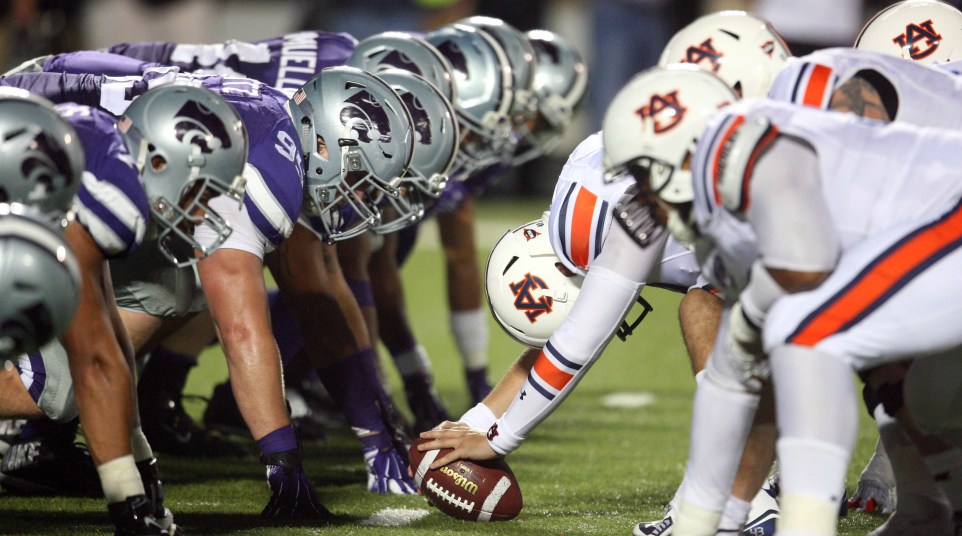Do the differences in power conference scheduling methods matter?
Scheduling plays a huge role in the culture of college football, especially outside of one’s conference.
Most teams’ conference schedules are two-thirds (or in the Big 12 three-fourths) of a team’s regular season schedule, and they really get no say in who appears on their conference slate.
But they do get to choose their non-conference opponents, and they’re given some more flexibility as far as where those games are played and, more importantly, when those games are played. Some schools and conferences schedule their non-conference games differently than others.
But does non-conference scheduling make an impact on a team’s outlook? Let’s try and find out.
The ACC’s non-conference scheduling method is much like the SEC’s in that most teams play three of their four non-conference games early in the season, saving one non-conference showdown (almost universally against unheralded opponents) to serve as a less-stressful week in the middle of the season, even more valuable now that schools are limited to only one open date.
There are only 1.5 ACC conference games scheduled in the first two weeks of the season (the half represents Virginia’s showdown with Notre Dame, which remains independent but is mandated to play five ACC opponents a year on a rotating basis), and most teams only have one conference game scheduled before October.
And just like the SEC, four ACC opponents save one non-conference game for the end of the season thanks to some longstanding in-state, cross-conference rivalries (Florida-Florida State, Georgia-Georgia Tech, South Carolina-Clemson and now Kentucky-Louisville). The overlaps between the two conference schedules that lie in these matchups are a big reason why the SEC and ACC schedule so similarly.
The Pac-12 takes loading up the early season with non-conference games to an even greater length, as there is not one all-Pac-12 matchup scheduled in the first two weeks of the season. Most teams will make it all the way to October before beginning conference play, and a number of those teams will play exclusively Pac-12 foes the final two months of the season.
The Big Ten also follows this method, which mirrors how Missouri began its year last year, playing four straight non-SEC foes only to end the year with a daunting eight-week run through the conference.
The Big 12 does this too, avoiding in-conference matchups like the plague until the last week of September, but it follows this method for a completely different reason than the Pac-12 or Big Ten.
Because the Big 12 plays a nine-game conference schedule, it also has a shorter non-conference slate that the league is content with knocking out in the first three weeks of the season. The Big 12 plays one non-conference game past Week 3, a Week 4 showdown between Kansas and Rutgers that most of us will conveniently forget to watch.
Plus, because the Big 12 lacks a conference title game, it considers conference championship weekend to be part of its regular season, saving some of its best conference matchups for that week. This is something only the Big 12 does, and only because the Big 12 is the only power conference that doesn’t play a conference title game. Once again, that oddity looms large in the landscape of college football (see, it’s not just relevant to that playoff thing).
Ultimately there’s not a ton of variation in how the power conferences form their schedules. Some like to save a non-conference game for the grueling mid-season push, while others like to get those games against foreign foes out of the way early to really allow the league and its fans to sink their teeth into the conference season.
The SEC, for instance, is one of the conferences to save a non-conference game for the midseason, likely because the physicality throughout the league is too much to bear for eight straight weeks or even eight times in nine weeks with a bye in there. However, other leagues may feel threatened by unfamiliar opponents and would rather be able to end the year with familiar rivalries and showdowns that fans crave.
There’s no right or wrong. They’re just different, and frankly they’re not even that different. If you think Ohio State beat Alabama last year because of how they’re conferences scheduled, move past that flawed theory.
If we’ve learned anything, it’s that at the end of the day, the best teams will win their games no matter where they fall on the schedule.

